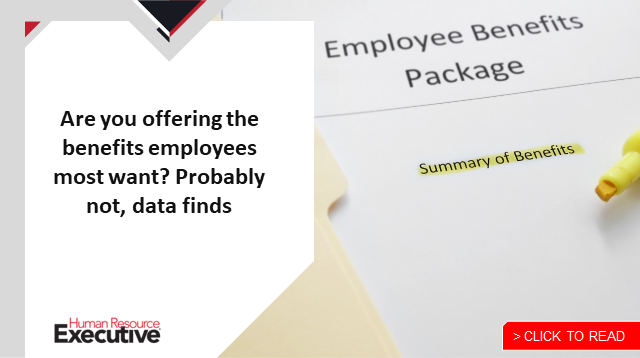It’s no surprise that pay is now the most important factor in satisfaction at work. This is according to Mercer’s 2022 Inside Employees’ Minds study, which surveyed more than 4,000 full-time employees working in organizations with 250 or more employees.
The 8.2 year-over-year rate of inflation has eroded any wage gains seen over the past two or three years. Consequently, the study shows that employees are currently much more focused on their financial health, as compared to results in 2021. The 2022 study showed that meeting monthly expenses, having the ability to retire and personal debt are now among employees’ greatest concerns.
These results should be a wake-up call for business and HR leaders. Now is the time to re-evaluate pay equity, transparency and pay practices, which are often based on decades-old models. Business and HR leaders must be aligned and working in concert to ensure people are being paid equally for equal work, to communicate openly how pay is structured and to implement pay practices that serve employees as well as overall business strategy.
Of course, when conversations regarding pay take place, the question that most frequently arises is whether pay should be raised, and if so, by how much. The answers depend on several factors. Generally speaking, companies that outperform over time pay people fairly, but they may not be the highest-paying companies in their markets. In addition to fair pay, these companies offer positive employee experiences, opportunities for growth, interesting and meaningful work, and trusting safe workplaces.
 That said, there are also companies that offer extraordinarily high levels of pay. Their cultures tend to be highly competitive and performance-oriented cultures. This can work for companies that rely on hitting aggressive targets. The downside is that people can burn out very quickly and they may not be incented to work well with peers.
That said, there are also companies that offer extraordinarily high levels of pay. Their cultures tend to be highly competitive and performance-oriented cultures. This can work for companies that rely on hitting aggressive targets. The downside is that people can burn out very quickly and they may not be incented to work well with peers.
Leaders also need to evaluate how bonuses are administered. Dean Carter, who recently retired as the CHRO of Patagonia, told me that at Patagonia, base pay increases center around how well employees do their jobs and expand their skills—regardless of the company’s financial performance. Bonuses are based on achieving personal goals. Such a structure sends the clear message that “doing your job better” is valued just as much as hitting financial targets.
Another increasingly common practice is to pay people based on team performance, not solely on individual performance. This strategy can foster teamwork and reduce individual competition.
Benefits should also be factored into compensation-related discussions. This space has become very complex and can cover a wide range of benefits—ranging from health insurance to wellbeing offerings to flexible work options and much more. According to the Bureau of Labor Statistics, non-cash benefits increased by 4.9% in 2022, compared to an increase of 2.5% in 2021. BLS research found that American companies now spend close to 33% of their payrolls on a myriad of employee support programs. Therefore, it is important to ensure that the benefits your company is offering are the ones most wanted by employees and that they are actually being used.
Every company should be conducting ongoing communication about compensation packages. Employees need to clearly understand how salaries are structured, how bonuses are determined and the benefits (and their value) available to them. Today, many states are requiring more transparency around salary ranges, so the best leaders are proactive in providing explanations and taking questions.
My final piece of advice is to think about how pay and benefits are administered. The Mercer research points out that many hourly workers see pay as a survival issue. Their pay is eaten away by commuting costs, student loans, credit card debt and rising living costs. If an employee is worried about making rent or buying groceries, they aren’t likely to be very productive. Therefore, I recommend exploring the many new options available on the market for delivering pay and benefits that can help employees while reducing administrative overhead and supporting more informed decisions.
For example, real-time pay can be a huge advantage for people on hourly wages. Rather than waiting one or two weeks for a paycheck, they get paid at the end of each day for the hours they’ve worked. Another innovative option is designating certain amounts of pay to tuition reimbursement or student loan forgiveness. You can pay employees up to $5,250 per year for educational benefits and they will not have to pay taxes on that money earned.
 In response to increasing financial stresses, some companies are also offering benefits related to improving the financial wellbeing of employees. Teaching people to manage their credit cards better, encouraging them to put money into savings accounts, learning how to better navigate insurance—such offerings can be life-changing for employees, and there are many providers who can help.
In response to increasing financial stresses, some companies are also offering benefits related to improving the financial wellbeing of employees. Teaching people to manage their credit cards better, encouraging them to put money into savings accounts, learning how to better navigate insurance—such offerings can be life-changing for employees, and there are many providers who can help.
The bottom line is that pay and benefits strategies are dynamic, strategic business tools. The compensation and benefits leader, who used to negotiate with providers and run the annual process, now has to operate as a strategic consultant. Pay and its permutations are a vital part of the employee experience and impact your employment brand, retention and overall business strategy.
Also, remember that while we account for pay as an expense, it’s really a mission-critical investment. By carefully investing in the right pay and rewards strategies, you are improving employees’ lives, which in turn makes them more productive for your business.
The post In times of economic stress, pay practices take a front row seat appeared first on HR Executive.